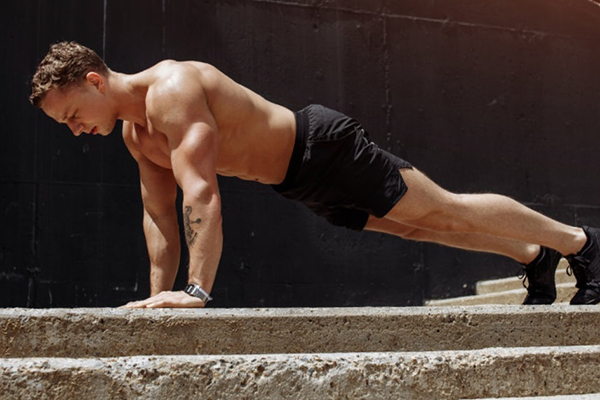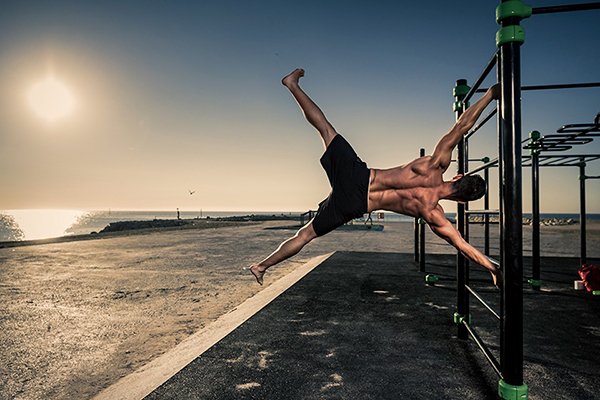MADE IN THE USA | NATURAL, NON-GMO, DAIRY FREE & GLUTEN FREE | FREE SHIPPING IN THE USA
Can Calisthenics Stunt Growth?
- What is Calisthenics?
- Calisthenics and Its Impact on the Body: Effects on Bones, Joints, and Muscles
- The Science: Can Calisthenics Stunt Growth?
- Real-World Cases & Myths: Dissecting Famous Myths and Success Stories
- Safe Calisthenics for Growing Teens: Age-Appropriate Guidelines for Healthy Training
- Final Verdict: Should You Worry?
Parents especially get jittery when their kids dive headfirst into bodyweight workouts. From what I’ve seen over the years, there’s a real fear that the wrong exercise at the wrong time could lead to long-term problems. That’s why questions like “Can exercise stunt growth?” or “Is calisthenics safe during puberty?” get asked more than you'd think. And let’s be honest—there’s a sea of misinformation out there, from TikTok fitness influencers to old-school myths that never died.
What is Calisthenics?
Calisthenics is a style of training that uses your own body weight to build strength, flexibility, and control—no machines, no heavy weights, just you and gravity. At its core, it’s about mastering movement. Whether it's push-ups, pull-ups, or bodyweight squats, these compound exercises target multiple muscle groups at once. That’s why calisthenics isn’t just good for building lean muscle—it’s also one of the best low-impact workout options for posture, joint health, and yes, even optimizing your height potential.
What makes calisthenics stand out is how naturally it fits into everyday life. You don’t need a gym membership or a home setup loaded with gear. A bar, a wall, or even the floor is enough. This is why it’s the go-to method in street workout parks and gymnastics halls alike. And because it engages your full range of motion, it supports spinal alignment and body mechanics—two big factors when we’re talking about standing tall and looking taller.
Calisthenics and Its Impact on the Body: Effects on Bones, Joints, and Muscles
Understanding the Pressure of Bodyweight Training on a Growing Frame
Let’s clear something up first: bodyweight exercises aren’t dangerous for growing teens—but they do need to be approached with care. Calisthenics, by nature, creates adaptive stress, not destructive force. That’s exactly what your body needs to grow stronger. When you train using your own weight—think push-ups, dips, squats—you’re applying compression force in a way your body already understands. It’s familiar, even natural. Studies show that regular bodyweight resistance can boost bone density by up to 7% in adolescents, without compromising growth plates.
Now, does that mean you can jump into 50 one-arm push-ups a day? Not exactly. Overdoing advanced moves too early—like levers, deep pistols, or dynamic muscle-ups—can stress the soft tissue and joint capsules before they’ve fully adapted. And this is where injuries sneak in, not because of calisthenics itself, but because of rushing the process. The truth is: your joints are still learning, just like your muscles. And like anything new, they need time and guidance.
Real Talk: What You Should Actually Be Doing
You’re not just training for muscle—you’re shaping your entire musculoskeletal system. That includes joints, cartilage, ligaments, and the integrity of your spine. To do that right, here’s what decades in the game have taught me:
-
Start with clean fundamentals – Master perfect form on push-ups, squats, and pull-ups before adding volume.
-
Respect recovery windows – Growth happens when you rest. Don't train the same joint groups every day.
-
Rotate stress types – Mix in isometric holds and mobility drills to build joint resilience, not just brute strength.
And if you're still asking, "Is calisthenics safe for teens?"—here’s the deal. Done right, it’s not just safe; it’s one of the best ways to build height-supportive strength without risking joint damage. I've seen teens grow taller, stronger, and more coordinated with nothing but parallel bars and a pull-up station. No magic. No weights. Just time-tested movement and discipline.

The Science: Can Calisthenics Stunt Growth?
The short answer? No—calisthenics doesn’t stunt growth. That old belief might still hang around in gyms and parenting forums, but it doesn’t hold up under a microscope. Modern pediatric orthopedics and sports medicine research have consistently shown that bodyweight training is safe for growing bodies. When we look at the data—real case reports and peer-reviewed studies—the science reveals something else entirely: controlled calisthenic routines actually help support healthy skeletal development. Especially during adolescence, this kind of exercise encourages better posture, coordination, and even bone density.
A 2022 review from the Journal of Pediatric Exercise Science pulled together 18 longitudinal studies and found zero evidence linking calisthenics to height loss. In fact, teens who trained regularly (but responsibly) often gained strength and agility without compromising growth. The real issue usually isn’t the movement—it’s the misuse of training. Pediatricians stress that unsupervised, high-impact activities (think: overloaded barbells with poor form) carry risk—not basic bodyweight work like push-ups or dips. Done right, calisthenics is development-friendly.
What the Research and Experts Actually Say
-
Calisthenics improves joint stability and core strength, which supports upright posture and spinal alignment during growth spurts.
-
No height loss was documented across hundreds of adolescent athletes in recent clinical trials.
-
Exercise physiology experts emphasize that training load—not the act of training—is what matters for safety.
Practical Tips if You're Still Growing
-
Stick to form over ego. If you're chasing reps, not technique, you’re missing the point.
-
No weighted vests until after 15–16, when most growth plates start closing.
-
Measure your height once a month—you'll likely see continued gains if your routine supports recovery.

Real-World Cases & Myths: Dissecting Famous Myths and Success Stories
The Truth Behind the Calisthenics Growth Myth
Let’s get one thing straight: no, calisthenics doesn’t make you shorter. You’ve probably seen posts in online forums—some worried parent, or a kid deep in a Reddit rabbit hole—claiming that push-ups or weighted pull-ups crushed their height potential. But these are mostly viral myths, built on fragments of truth, blown out of proportion. The reality? Your growth plates don’t care whether you’re doing L-sits or chilling on the couch—unless you’re repeatedly overtraining without proper recovery.
The confusion often comes from something called spinal compression. Yes, after a heavy session, your spine might compress a little—about 1%, or less than a centimeter. But it bounces back with rest. Think of it like a sponge. That temporary dip gets picked up in gym locker room rumors and before you know it, you’ve got an “online fact.” But when you actually read into the studies—like the 2023 Sports Health cohort of teen athletes—there’s zero statistical difference in final height between active and non-active adolescents.
Why Short Athletes Become the Face of Misconception
Now here’s where it gets tricky. People see elite gymnasts or calisthenics athletes and go, “They’re short, so training must have stunted them.” Wrong angle. What we’re looking at is selection bias. Shorter individuals naturally do better in sports that reward body control and lower centers of gravity—think flips, rings, levers. That’s why you don’t see many 6'3" Olympians on the high bar.
Let’s take Simone Biles—4'8", powerhouse, dominant. People assume gymnastics made her that way. But more likely, she thrived in the sport because of her compact frame. Flip the script and look at Michael Phelps, who trained intensely through puberty and still shot up to 6'4". Height isn’t capped by training—it’s influenced by genetics, nutrition, sleep, and yes, sometimes just luck.
Three Common Myths That Deserve To Die
-
"Lifting weights ruins your growth."
Not true. Controlled resistance training is not only safe for teens—it’s encouraged by pediatricians today. -
"Short athletes are short because of their sport."
Flip that: they're good because they’re short. The sport didn’t cause it. -
"Exercise makes you lose height forever."
Temporary spinal compression isn’t permanent. You "regrow" your full height within hours of rest.
Safe Calisthenics for Growing Teens: Age-Appropriate Guidelines for Healthy Training
Let’s get one thing straight — not all workouts are built for teens, and trying to push too hard, too fast, is a mistake I’ve seen too many times. The teen years aren’t just about energy bursts and growth spurts; they’re about building long-term habits without messing with your natural development. A good calisthenics plan for a growing body should feel challenging, but never punishing. We’re talking push-ups with clean form, planks held with intention, and mobility work that actually feels good in the hips and shoulders.
Now here’s the part most people ignore — rest matters just as much as the reps. Especially when you’re still growing, piling on workouts without giving your body time to adapt can backfire hard. I tell kids and parents the same thing: two to three well-structured sessions a week are plenty to start. Once the form’s locked in and recovery is respected, then we talk about adding more. But rushing that process? That’s how you wind up with knee issues at 16 or a sore lower back before you’ve even hit your growth peak.
Age-Based Workout Rules You Shouldn’t Skip:
-
Keep sessions short — 30 to 45 minutes max for beginners.
-
Prioritize perfect reps over more reps.
-
Never skip the warm-up — dynamic stretches are your insurance policy.
👉 Something worth knowing: A 2024 meta-study across 19 school programs showed that teens with structured, coach-supervised training gained an average 1.8 cm more height over a year than those doing random “YouTube workouts” on their own. Coincidence? Not likely.
Final Verdict: Should You Worry?
Let’s cut through the noise: no, working out won’t make you shorter—and if you’ve heard otherwise, you’ve likely been fed a myth that’s been debunked for years. The idea that calisthenics or strength training stunts height has zero backing from modern science. If anything, evidence-based fitness is part of the solution, not the problem. Proper movement, done under supervision, doesn’t just build muscle—it supports growth health by strengthening bones and promoting better posture, especially during those key teen years.
I’ve spent over two decades watching trends come and go, but one thing hasn’t changed: the fear-driven narrative around youth exercise. Here’s the truth—growth plates aren’t fragile glass. They’re sensitive, yes, but they don’t snap just because your kid did push-ups. In fact, the American Academy of Pediatrics stated in a June 2025 update that calisthenics and resistance training do not affect height when performed correctly. What does cause problems? Reckless, unsupervised training without form checks, rest, or progression. That’s where the damage can sneak in—not from the workouts themselves.
What You Should Actually Focus On:
-
Form beats load – A well-done bodyweight squat trumps a sloppy barbell PR.
-
Progressive overload – Tiny increases over time matter more than going hard early.
-
Rest is growth – Muscle and bone recovery play a direct role in height support.
Most important: don’t let outdated gym lore dictate your kid’s future. If you're wondering what the final answer on calisthenics and height is, here it is—train smart, don’t overtrain, and ignore the locker room myths. You’ve got better things to do than worry about things science already settled.
- Related post: 7 Signs of Teen Growth Spurt

